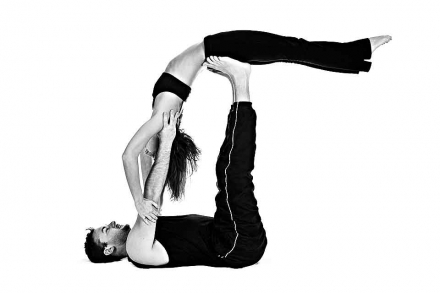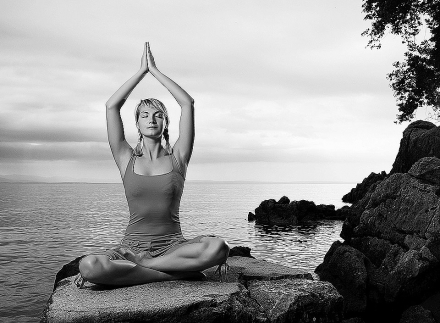Welcome, fellow yogis and yoga-curious readers! Today we’re venturing beyond the physical practice of yoga and diving into the transformative power of the yoga mindset. You see, yoga is more than just bendy poses and breathing exercises. It’s a holistic lifestyle that can shape our minds, nourish our bodies, and enrich our lives. Intrigued? Let’s dive in!
Understanding the Yoga Mindset
We’ll start with the basics. So, what exactly is a yoga mindset?
- A yoga mindset refers to the philosophy of living that yoga promotes—a way of thinking and being that fosters harmony between the mind, body, and spirit.
- It’s not about being able to touch your toes or master a handstand. Instead, it’s about cultivating self-awareness, compassion, and mindful living.
Now, why should we care about adopting a yoga mindset?
- Benefits are aplenty! From enhanced mental wellbeing, increased resilience, improved relationships, to better physical health—it’s a holistic package.
- Plus, it’s a fantastic way to bring the peace and mindfulness from the yoga mat into your everyday life.
The key components of the yoga mindset include:
- Self-awareness: Cultivating an understanding of your thoughts, feelings, and actions.
- Mindfulness: Being present and fully engaged in the current moment.
- Compassion: Cultivating empathy towards yourself and others.
- Non-attachment: Learning to let go of outcomes and focusing on the process.
Yoga Beyond the Mat
If you thought yoga only happens on the mat, think again! Yoga principles can seep into every corner of your life—transforming not just your body, but also your mind and spirit.
Incorporating yoga principles into daily life
- Practice mindfulness during everyday tasks. Be it eating, walking, or even doing chores—be fully present in the moment.
- Bring self-awareness into your actions. Reflect on why you do what you do, and align your actions with your values.
The art of mindfulness
- Mindfulness is at the heart of a yoga lifestyle. It’s all about tuning into the present moment—observing your thoughts, feelings, and sensations without judgment.
- Practicing mindfulness can improve your mental health, reduce stress, and enhance your overall quality of life.
Yoga’s impact on relationships and community
- Yoga teaches compassion and empathy—helping us to relate better to others and foster healthier relationships.
- Community involvement, or ‘Seva’ in yogic terms, encourages us to contribute positively to our communities—further extending the benefits of our yoga practice into the wider world.
Remember, yoga is more than just a physical practice—it’s a holistic lifestyle that nurtures the mind, body, and soul. So, unroll that yoga mat and let’s embark on this exciting journey to a healthier, happier you!
Embodying Yoga in Nutrition
“Let thy food be thy medicine, and thy medicine be thy food” – a nugget of wisdom from Hippocrates that’s as relevant today as it was in ancient Greece. Yoga takes this a step further, treating food not only as a source of physical nourishment but also a means to achieve balance and harmony in the body and mind.
Yoga’s perspective on diet and nutrition
The practice of yoga encourages mindful eating, urging us to tune in to what our bodies truly need. It’s about savoring every bite, understanding where our food comes from, and acknowledging the energy it gives us.
- Choosing Quality over Quantity: Opting for nutrient-dense foods over calorie-dense ones.
- Awareness of the Source: Acknowledging the journey of our food from farm to plate.
- Mindful Consumption: Eating without distractions, focusing on the flavors, textures, and scents of the food.
The concept of Sattvic food
Within the yoga tradition, Sattvic foods are considered the purest diet. They’re foods that are abundant in Prana – the universal life force that provides vitality to all living things.
- What are Sattvic Foods?: They’re typically fresh, organic, and lightly processed foods.
- Benefits of Sattvic Foods: They promote clarity, understanding, and spiritual growth.
- Examples of Sattvic Foods: Fruits, vegetables, nuts, seeds, and whole grains are all Sattvic foods.
How a yogic diet contributes to holistic health
By adopting a yogic diet, you nourish your body with high-quality foods and create an environment conducive to healing and growth.
- Physical Benefits: Improved digestion, boosted immunity, and enhanced energy levels.
- Mental Benefits: Enhanced focus, clarity of mind, and reduced stress and anxiety.
- Spiritual Benefits: Greater attunement to nature and heightened self-awareness.
Holistic Fitness: Asanas and Beyond
As we move to the mat, it’s crucial to understand that yoga’s physical practice, or asana, is just one of the eight limbs of yoga. While asanas keep your body healthy and strong, they also prepare you for deeper spiritual practices.
Significance of physical yoga practice
Asanas provide numerous benefits that go beyond the physical.
- Body Awareness: Asanas increase our body awareness, teaching us to listen and respond to its signals.
- Balance and Flexibility: Regular practice improves balance, flexibility, and range of motion.
- Strength: Yoga poses help in building core strength and improving muscle tone.
Integration of breathwork (Pranayama)
In yoga, the breath is not just a life-sustaining function but a powerful tool for transformation.
- Mind-Body Connection: Breathing exercises, or Pranayama, strengthen the mind-body connection.
- Stress Management: Pranayama can reduce stress and promote a sense of calm.
- Energy Regulation: Different breathing techniques can energize or relax you, depending on your needs.
Emphasis on relaxation and recovery
Yoga understands the importance of balance. Just as there are poses that challenge us, there are practices focused on relaxation and recovery.
- Restorative Yoga: This yoga style uses props to support the body, encouraging deep relaxation.
- Yoga Nidra: Also known as yogic sleep, Yoga Nidra is a practice of conscious relaxation.
- Savasana: The final resting pose in most yoga classes, Savasana allows the body and mind to integrate the benefits of the practice.
Let’s remember, a holistic yoga lifestyle isn’t just about doing yoga; it’s about living yoga, in every breath, every meal, and every movement. Stay tuned as we continue to delve deeper into embracing this lifestyle in the coming sections.
Yoga for Mental Wellbeing
Yoga’s approach to mental health
In yoga, mental wellbeing is just as important as physical health. Unlike traditional fitness regimes, yoga doesn’t end with physical exertion—it integrates mindfulness and meditation to nurture mental health.
- Stress relief through yoga: Regular practice can reduce cortisol levels, the notorious stress hormone.
- Yoga and resilience: Yoga fosters emotional strength, helping you to navigate life’s challenges with grace.
- Promoting positivity: Yoga encourages a positive mindset, promoting optimism and resilience.
The role of meditation and mindfulness in yoga
Meditation and mindfulness are integral to the yoga lifestyle. They allow us to focus on the present moment, fostering mental clarity and inner peace.
- Mindful yoga: Incorporating mindfulness into your yoga practice intensifies the mind-body connection.
- Meditation 101: How to incorporate simple meditation techniques into your routine.
- The benefits of meditation and mindfulness: From improved concentration to stress relief and enhanced self-awareness.
Addressing stress and anxiety through yoga
Yoga is a proven antidote to stress and anxiety. Its mindful, slow-paced approach offers a refreshing contrast to our fast-paced, stress-filled lives.
- Yoga poses for stress relief: Learn some calming asanas to reduce stress levels.
- Yoga breathing techniques for anxiety: Discover Pranayama exercises that can soothe anxiety.
- Yoga and sleep: How yoga can enhance sleep quality, further reducing stress and anxiety.
Maintaining a Consistent Yoga Practice
Importance of consistency in holistic yoga
Holistic yoga is not a quick fix—it’s a lifestyle. And like any lifestyle, consistency is key.
- Regular practice for sustained benefits: How maintaining a regular routine can help maximize yoga’s benefits.
- Balancing discipline and flexibility: The importance of a consistent yet adaptable yoga routine.
- Developing a home practice: Tips on creating and sticking to a yoga routine at home.
Overcoming common obstacles in maintaining a yoga routine
Every yogi, no matter how experienced, faces challenges. Here’s how to conquer common obstacles:
- Time management: How to fit yoga into your busy schedule.
- Motivation maintenance: Keeping the spark alive in your yoga journey.
- Overcoming physical hurdles: Handling injuries and physical limitations in your practice.
Tips for integrating yoga into daily routine
Yoga is not limited to the mat—it can permeate every aspect of your life.
- Mindful mornings: Incorporating yoga into your morning routine.
- Yoga at work: Simple stretches and mindfulness practices for the workplace.
- Bedtime yoga: Gentle poses and relaxation techniques to wind down your day.
Conclusion: The Journey to a Yoga Lifestyle
And so, dear friends, we reach the end of our exploration into the yoga mindset and the holistic lifestyle it fosters. From enhancing mental wellbeing to cultivating consistency, yoga offers a path to balanced living that is as challenging as it is rewarding. But remember, yoga isn’t a destination—it’s a lifelong journey of self-discovery and growth. So keep exploring, keep learning, and most importantly, keep practicing. Your journey is unique, your experiences your own. Embrace the yoga mindset and watch as it transforms your life, one breath at a time. Namaste.
0















